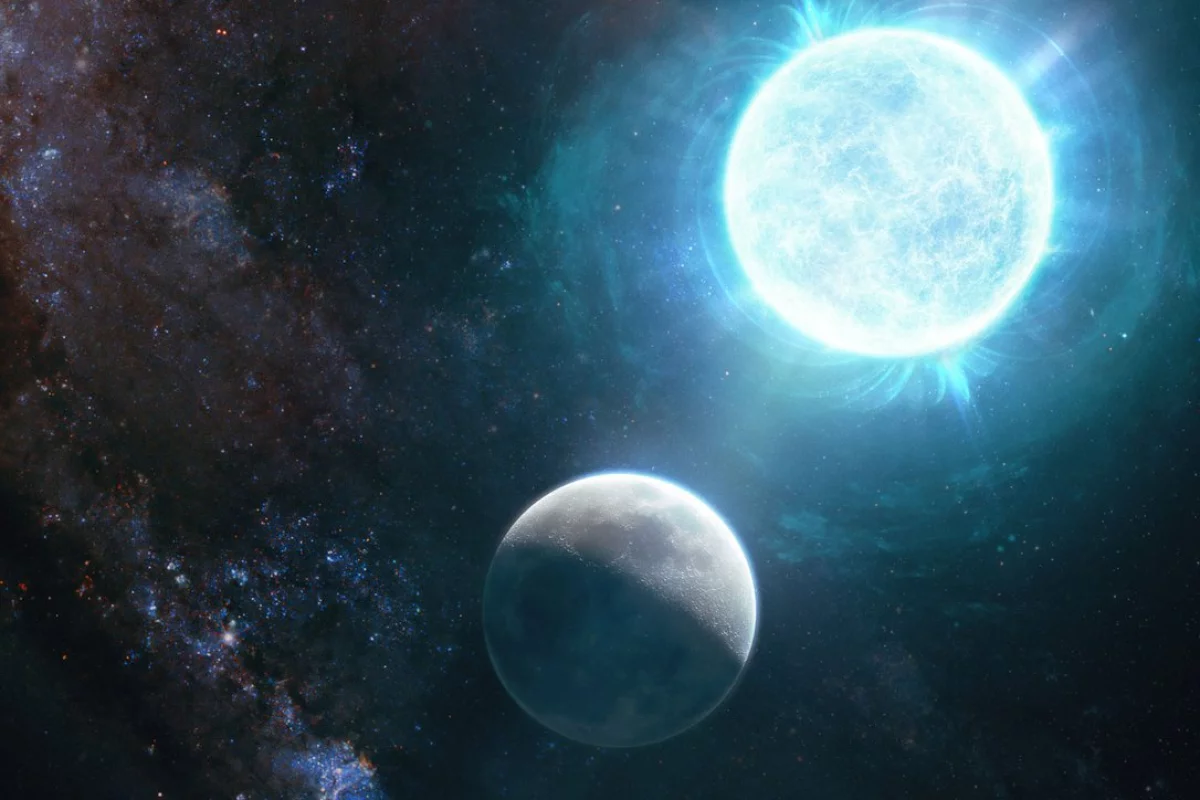Astronomers have discovered the smallest but most massive white dwarf ever found: the tiny star is only about the size of our Moon, but packs in more mass than the Sun. That means it’s approaching the theoretical limit of what’s possible without exploding.
When stars of a certain mass reach the end of their lives, they swell up into a red giant, then shed their outer layers, leaving behind a dense core. With no more fusion occurring in their centers, these stellar remnants can no longer hold themselves up against the crushing pressure of their gravity, and collapse into a white dwarf. These objects are much smaller than other stars, but more massive.
And now, astronomers have discovered a white dwarf that breaks the record in both of those fields. Designated ZTF J1901+1458, the star measures just 4,300 km (2,672 miles) across, and contains 1.35 times the mass of the Sun.
For comparison’s sake, most white dwarfs have masses between about 0.5 and 0.7 Suns, and have diameters of roughly 12,000 km (7,900 miles) – about the equivalent of Earth. Instead, this new one is closer in size to our Moon.
The astronomers say that this massive white dwarf was most likely born from a merger between two smaller ones. That’s evident not just in its mass but in its particularly strong magnetic field, almost a billion times stronger than the Sun’s, and its super-fast spin – it takes just seven minutes to make one full rotation.
Intriguingly, the white dwarf is very close to the theoretical limit of 1.44 solar masses. Any more than that, and it would likely explode as a type Ia supernova. But the researchers suggest that perhaps there’s a stranger fate in store for ZTF J1901+1458 – it might just collapse into a neutron star instead, which are normally born from larger stars.
"This is highly speculative, but it's possible that the white dwarf is massive enough to further collapse into a neutron star," says Ilaria Caiazzo, lead author of the study. "It is so massive and dense that, in its core, electrons are being captured by protons in nuclei to form neutrons. Because the pressure from electrons pushes against the force of gravity, keeping the star intact, the core collapses when a large enough number of electrons are removed.”
If so, it could mean that neutron stars form this way relatively regularly. Further study might yield more answers.
The research was published in the journal Nature.
Source: Caltech




